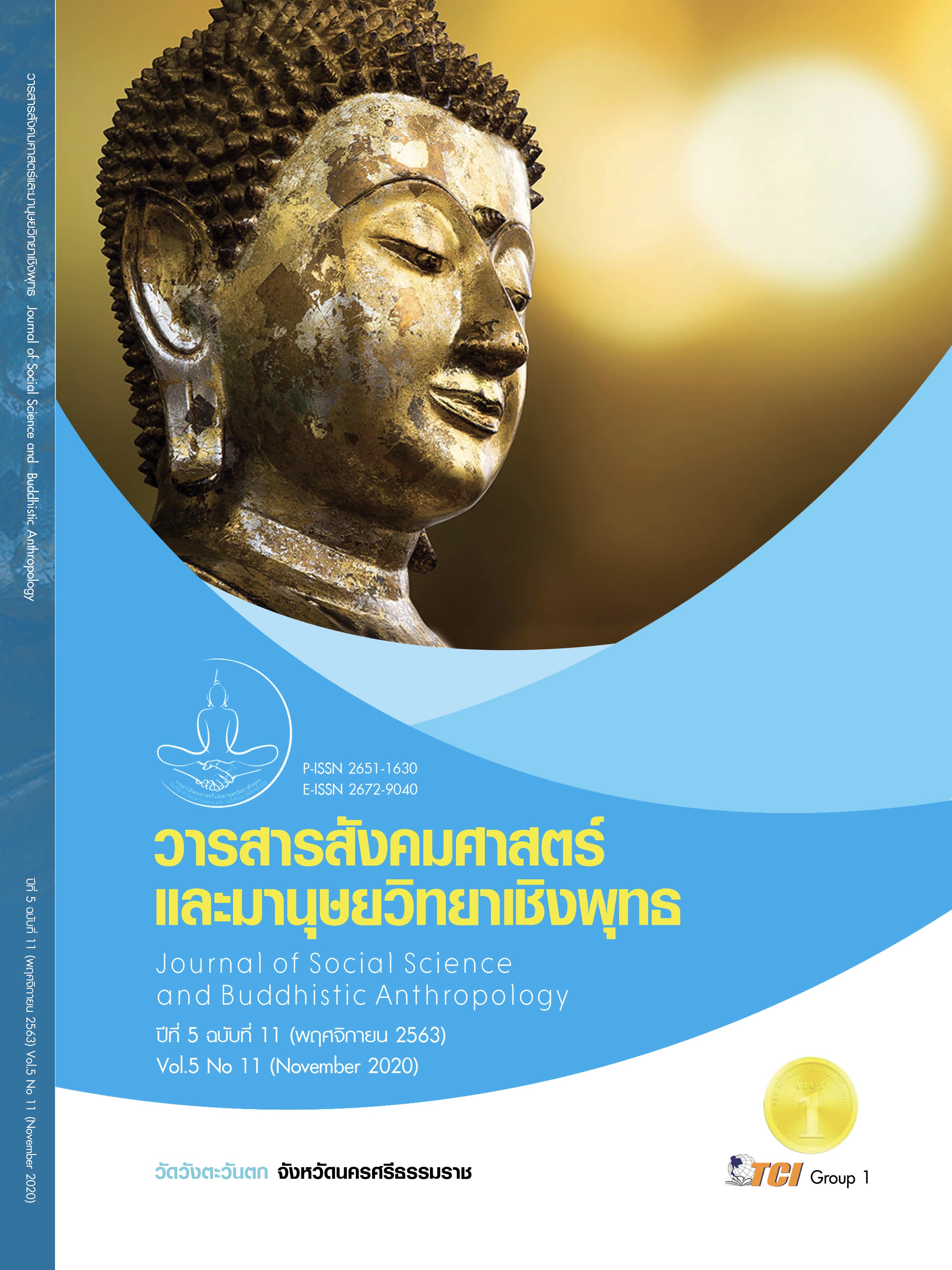COST ANALYSIS OF NEW PRODUCT DEVELOPMENT OF THE WOVEN CLOTH GROUPS COMMUNITY ENTERPRISES IN CHAINAT PROVINCE
Keywords:
Cost Analysis, Development of New Product, Woven Cloth Group, Community Enterprise, Activity Based CostingAbstract
The Objectives of this research article were to develop and to analyze cost of the new product development of the woven cloth groups, community enterprises in Chainat province, Thailand. This is a qualitative research that is divided into two steps. First step is to use purposive sampling to in - depth interview from two groups, which are six members from 247 members, 18 woven cloth groups; and 12 women customers who like woven cloth products are conducted. The data of those in - depth interviews are analyzed to create the new product models which are reviewed by five experts. Second step is to send the new product models to two experts to train 10 volunteers who have sewing ability from woven cloth groups members. The cost analysis is based on Deming cycle, production cost, and activity based costing. The findings of the new product development process show six steps: 1) searching the new products, 2) surveying customers’ needs to the new products, 3) sketching the new product models, 4) checking the new product models, 5) preparing to produce the new products, and 6) producing the new products. For cost analysis results of new product development are defined to the unit product cost equations into the form of production cost: direct materials, direct labor, and manufacturing overhead. The cost of the new product development process is the manufacturing overhead costs that are defined into three activities: 1) creating the new product models activity, 2) preparing the production activity, and 3) producing the new product activity. It represents the manufacturing overhead costs as the primary cost of development of new products and is the source of cost reduction for new products.
References
จรัสพิมพ์ วังเย็น และคณะ. (2556). การพัฒนาผลิตภัณฑ์จากผ้าขาวม้าโดยใช้แนวคิดภูมิปัญญาท้องถิ่นกับแนวคิดการออกแบบแฟชั่นเพื่อพัฒนาอาชีพและผลิตภัณฑ์ชุมชน อำเภอวานรนิวาส จังหวัดสกลนคร. ใน รายงานวิจัย. กรุงเทพมหานคร: มหาวิทยาลัยเทคโนโลยี่ราชมงคลพระนคร.
ฐิติพันธ์ จันทร์หอม. (2559). การพัฒนาผลิตภัณฑ์ผ้าทอภูมิปัญญาของชาวไทยทรงดำในภูมิภาคตะวันตกของประเทศไทย. วารสารสมาคมนักวิจัย, 21(1), 181-192.
บุษบา หินเธาว์. (2557). การวิจัยปฏิบัติการแบบมีส่วนร่วมของชุมชนเพื่อหาแนวทางอนุรักษ์ฟื้นฟูภูมิปัญญา9 ผ้าทอลาวครั่ง. วารสารปาริชาต มหาวิทยาลัยทักษิณ, 27(3), 133-144.
วนิดา โปแก้ว และคณะ. (2549). พิพิธภัณฑ์ท้องถิ่นและแหล่งเรียนรู้ใกล้เคียง: กรณีศึกษาพิพิธภัณฑ์ผ้าทอไทครั่งบ้านเนินขาม ในพื้นที่กิ่งอำเภอบ้านเนินขาม จังหวัดชัยนาท. กรุงเทพมหานคร: สถาบันพิพิธภัณฑ์การเรียนรู้แห่งชาติ.
วรรณา เรืองปราชญ์. (2556). การสืบสานภูมิปัญญาท้องถิ่นการทอผ้าพื้นเมืองชาวลาวเวียงด้วยเทคโนโลยี 9 สารสนเทศ. วารสารจันทรเกษมสาร, 19(37), 11-20.
ศุภชัย สิงห์ยะบุศย์. (2547). การพัฒนาผลิตภัณฑ์จากวัฒนธรรมผ้าทอพื้นบ้านสู่ระบบอุตสาหกรรมสินค้าชุมชน: ศึกษากรณีกลุ่มแม่บ้านเพิ่มพูนทรัพย์ ตำบลนาเชือก อำเภอนาเชือก จังหวัดมหาสารคาม. ใน รายงานวิจัย. กรุงเทพมหานคร: กระทรวงวัฒนธรรม.
สิริพร รอดเกลี้ยง และนงลักษณ์ ก้งเซ่ง. (2559). การพัฒนาผลิตภัณฑ์ผ้าทอเกาะยอโดยกระบวนการมีส่วนร่วมของชุมชน: กรณีศึกษาชุมชนบ้านท่าไทร ตำบลเกาะยอ อำเภอเมือง สงขลาจังหวัดสงขลา. สารอาศรมวัฒนธรรมวลัยลักษณ์, 16(2), 95-111.
Asibey, M. O. et al. (2017). The impact of cultural values on the development of the cultural industry: Case of the Kente textile industry in Adanwomase of the Kwabre East District, Ghanan. Journal of Human Values, 23(3), 200-217.
Chwastyk, P. & Kolosowski, M. (2014). Estimating the cost of the new product in Development Process. Proredia Engineering, 69(1), 351-360.
Cokins, G. (2002). Integrating target costing and ABC. Journal of Cost Management, 16(4),13-22.
Cooper & Kaplan. (1991). Activity based systems: measuring the costs of resource usage. Boston: Harvard Business School.
Drury, C. (2018). Management and cost accounting. Hampshire: Cengage Learning.
Horngren, C. T. et al. (2015). Cost Accounting a Managerial Emphasis. Harlow: Person Education.
Jagusiak-Kocik, M. (2017). PDCA cycle as a part of continuous improvement in the production company-a case study. Production Engineering Archives, 14(14), 19-22.
Khatoon, R. et al. (2014). Study of Traditional handloom weaving by the Kom tribe of 9 Manipur. Indian journal of traditional knowledge, 13(3), 596-599.
Kumar, N., & Mahto, D. G. (2013). Current trends of application of activity based costing (ABC): a review. Global Journal of Management and Business Research, 13(3), 11-24.
Mishra & Mohapatra. (2019). Welfare of rural handloom community through knowledge management – a review. Pramana Research Journal, 9(4), 45-52.
Özbayrak, M. et al. (2004). Activity-based cost estimation in a push/pull push/pull advanced manufacturing system. International Journal of Production Economics, 87(1), 49-65.
Stratton et al. (2009). Activity-based costing: is it still relevant? Management Accounting Quarterly, 10(3), 31-40.
Temesgen et al. (2018). The art of hand weaving textiles and crafting on socio-cultural 999999values in Ethiopian. International Journal of Advanced Multidisciplinary Research, 5(12), 59-67.
Tornberg et al. (2002). Activity-based costing and process modeling for cost-conscious product design: a case s tudy in a manufacturing company. International Journal of Production Economics, 79(1), 75-82.








